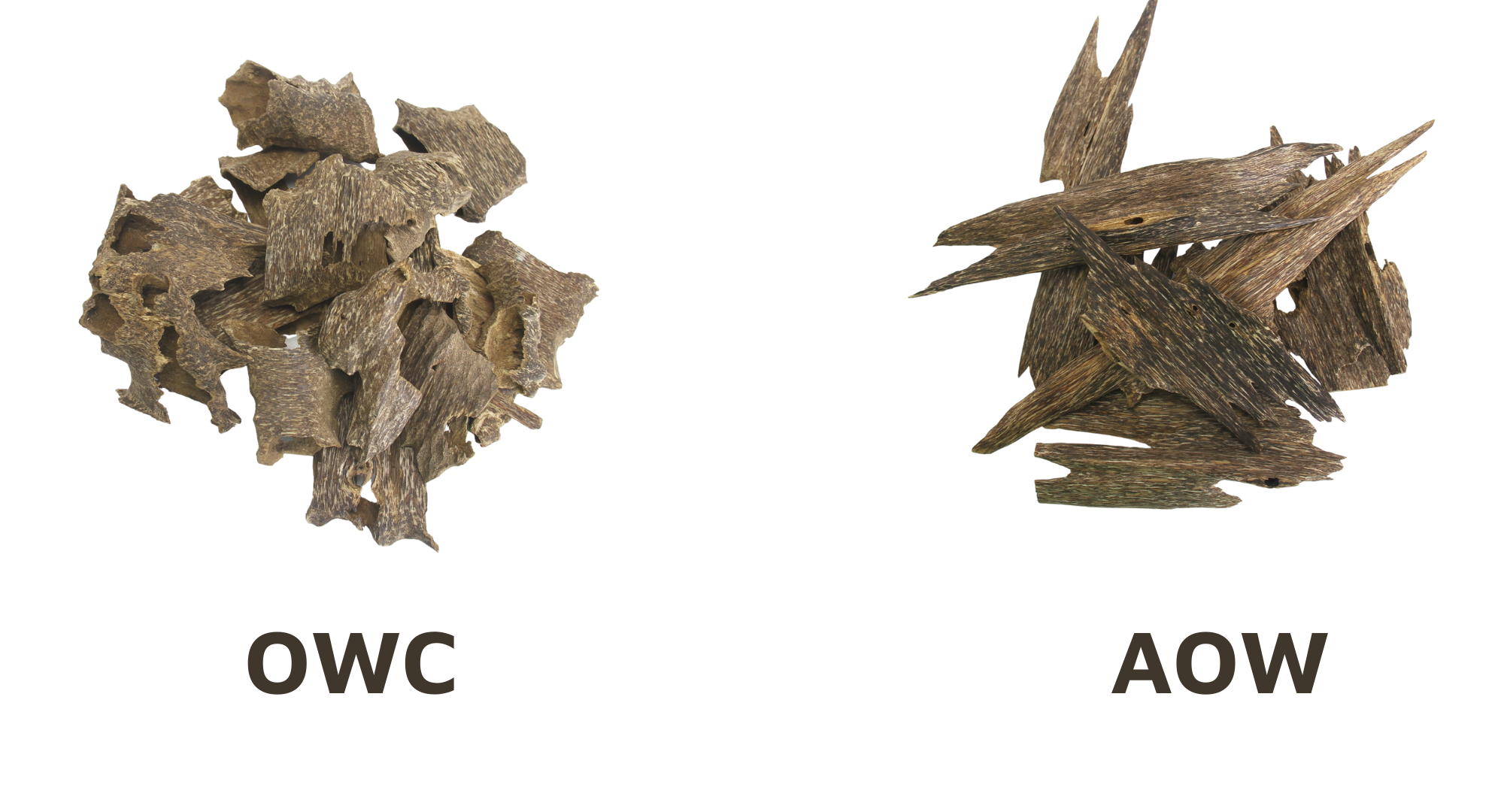- You have no items in your shopping cart
- Subtotal: $0.00
To begin, What exactly is oud? Is it made of wood? Oud is a fungus-infected heartwood from the Aquilaria tree (agarwood). This infection changes the tree and the infected area is harvested as oud. This area is called oud wood, later turned into an essential oil.
Then how many types of oud are there? There will be two types of oud: Agar oud and Natural oud, commonly known as OWC oud and AOW oud. So how to distinguish them?
First of all, let’s talk about the origin of these two types of oud. Natural Oud (AOW oud) is derived entirely from natural agarwood trees. These agarwood trees are typically 35-50 years old and develop in the best circumstances. Scars on trees are caused by natural forces such as lightning, fungi, and ants, leading in the production of agarwood. Agar Oud (OWC oud) on the other hand, is grown from the seed of the natural oud plant and then controlled by humans through the growth phases using natural methods such as temperature, moisture, and biological effects. Calculate separately to achieve the finest smell and quality. As a result, there are no dangerous ingredients changing the composition and it is completely safe to use. The trees are typically between 20 and 35 years old.
The next factor to distinguish these two types of oud is their shape. The shape of the AOW oud is oblong and sharp. After the wood has totally deteriorated without any human interference, the oud takes on this form naturally. In contrast, the OWC oud has a hollow midsection and a somewhat circular form. There is a physical influence of people during harvest and cleaning because it is grown in the regular agarwood air, soil, and water conditions.
Their color should be considered next. The feature of resin oud is readily apparent on the surface of AOW oud, which often has a glossy black tint. However, when handled in the hand, it is naturally quite clean and not greasy. Meanwhile , OWC oud is manufactured and cleaned industrially, giving it a somewhat grayish black hue, a matte surface, and less shine than the natural oud.
Weight is the fourth identifying characteristic. Oud is lighter than a solid piece of wood since it is a non-wooden resin. AOW oud weighs 3 to 5 grams per piece of typical size. Whilst OWC oud piece weighs an average of 2 to 5 grams each piece and is dryer and lighter than the natural version.
The fifth element is scent. AOW oud has a strong sweet and warm scent. The scent of aow, will be sharper and darker, suitable for long-time, sophisticated users. However, OWC oud has a bitter and spicier scent, it will smell right away, pleasant, warm nose suitable for relaxation.
Burning is defined by that last element. When AOW oud is burned at room temperature, the smoke column has a milky appearance, the oil boils and becomes extremely thick, and the air bubbles are tiny. The scent is powerful and sweet. Characteristic scent: Warm, sweet, not irritating to the eyes or adhering to clothing, in tight spaces, and in a car for a long period (7 to 8 hours) without producing a burning or suffocating sensation. The fragrance is extremely expensive and unique. Whereas, OWC oud, when burned, there will be more air bubbles than usual. There is a faint, pleasant scent at room temperature. A recognizable perfumy sweetness, a mild honey flavor, a hint of spice, and extreme warmth. The component may eliminate microorganisms that are damaging to clothing, rooms, or automobiles, but the column of smoke is thinner than the natural form. About 7 hours pass between scentings.
In terms of price, there is definitely a difference because of the age and rarity as well as the quality of each product. But they are all safe and have health benefits for you when used daily. In addition, special farming formulas and climate are suitable for this premium product. Oud Vietnam is committed that no matter what kind of product you choose from us, it will always be an unprecedented experience.




